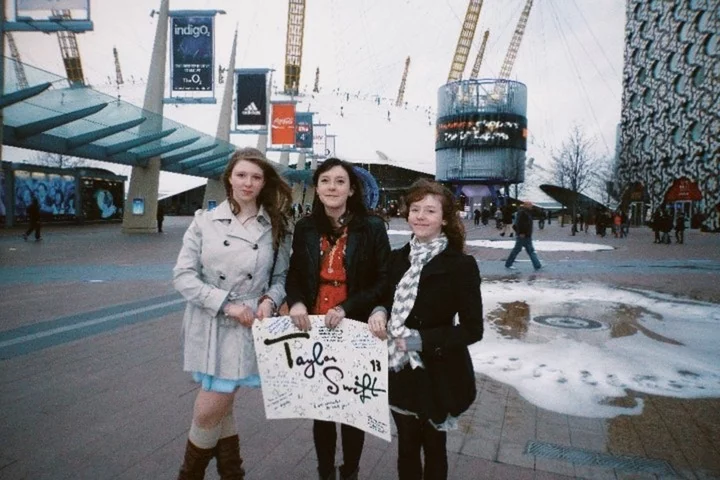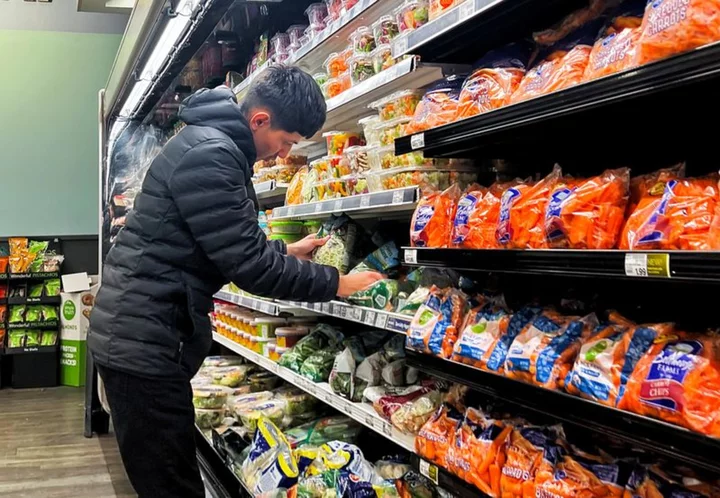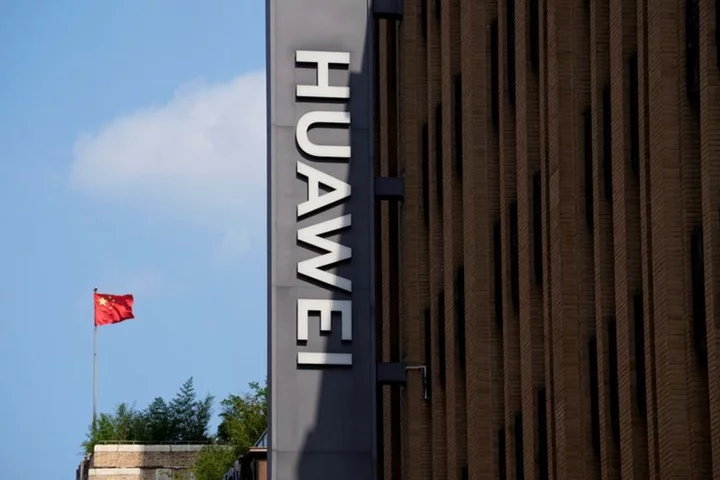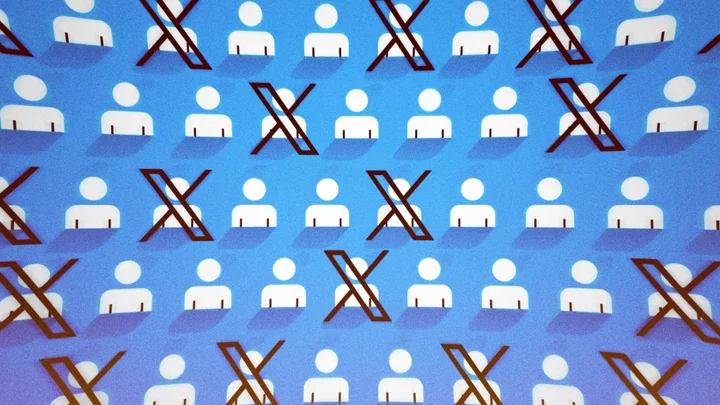When I was 16 years old I was lucky enough to see Taylor Swift live for the first time. My sister and I pooled all our resources — birthday card cash, babysitting tips, pocket money — to splurge on Speak Now tour tickets at my closest venue, London’s O2 Arena in the UK. Along with our mom (our chaperone) and a friend, we took our places in the back row and clung onto the near vertical seats to sing, scream, jump, and cry, all at the same time. We wore the very best from our existing wardrobes and took barely any pictures. The only evidence from the then Best Night Of My Life is a grainy, disposable photo that my mom made us take outside the arena “for posterity’s sake.” I’m clutching my simple but lovingly made poster and smiling awkwardly — I was far too teenage and far too uncomfortable in my own skin to want to pose. Neither I nor my family can remember how much we paid but the internet tells me tickets started at $37 and there’s no way, despite our combined piggy banks, that we would have been able to break $60 two times over. Not to mention the cost of our train tickets to and from London, which we would also have been expected to cover.
Oh, how different it is to be a fangirl today. In 2023, I hardly bat an eye at tales of people crossing continents to see Beyoncé, camping for days to see BTS, or going broke to secure Harry Styles tickets. Designing elaborate replicas of your idol’s costumes and documenting your battles for barricade? All par for the course. In my case, I was again blessed by the fandom gods and secured a spot at Taylor’s mega Eras tour, shelling out $139 of my big girl adult money — a far cry from 2010. What’s changed? Well, the obvious. “Like all venues across the UK, big or small, the current economic climate has had a major impact on the delivery of live events,” Adam Pearson, commercial director at The O2, tells Refinery29. “Costs for staffing, food and beverage services, and energy are all at their highest ever, and so ticket prices also have to increase — up 12% compared to last year, although this varies between acts.” (It’s important to note that ticket prices are set by the event promoter or organizer and not a venue like The O2 or a ticketing company like Ticketmaster.)
Brexit, too, has had a hand in pricing. “Including global inflation and the cost of living crisis, supply chain disruptions are affecting production equipment and labor availability,” Lynsey Wollaston, VP & GM of AEG European Festivals, tells Refinery29.
But much like a snake forever devouring itself, the rising costs of fandom are in part due to the ravenous hunger of fans themselves. With more of us fighting for the same supply of tickets, ticket prices are bound to go up and up and up. Both The O2 and AEG have witnessed increased demand, The O2 in the form of its busiest arena calendar ever and AEG in the form of its busiest BST Hyde Park ever (“over 650,000 guests” according to Wollaston).
“Despite rising costs, we’re still seeing a strong demand for experiences and a willingness to spend on unforgettable moments from customers,” says Pearson. “In particular, on things like merchandise.” Given I spent over an hour in a Harry Styles merch queue earlier this summer, I don’t doubt him. “We’re also continuing to see a huge demand for premium tickets, with the majority of our products currently sold out and operating with waiting lists.”
“While we can’t fully mitigate these rising costs, what we can do is look at areas we can invest in and develop further in order to still deliver a best-in-class experience for our fans, bands, and brands,” he continues, explaining that The O2 has just hired an energy manager, whose job it is to reduce energy consumption — one of the venue’s biggest cost pressures.
From a fan’s perspective, it’s easy to feel a little exploited. “Of course, it’s changed! People have realized how much money they can make off us,” laughs Sarah, a 25-year-old Swiftie from Alberta, Canada, over a Zoom call. “Did you see that the Eras tour apparently brought Las Vegas tourism back up to pre-COVID levels? That’s why some of our politicians are kicking off in parliament for her to bring the tour here [to Canada].” (It’s not clear why Taylor hasn’t made her way up to the Great White North but the Swiftie rumor mill is currently in overdrive, theorizing that there could be a second North American leg of the tour in the works. A late summer 2024 stint would make sense weather-wise for her open-air stadium shows.)
“It’s about us taking back the power,” Sarah continues. “Just look at what happened with Ticketmaster in the US!” She’s referring to what Swifties jokingly call “The Great War” (after one of Taylor’s songs), when US fans successfully took the merchant to court for “unlawful conduct” after it fumbled online ticket sales for the Eras tour. The lawsuit has since resulted in further legal scrutiny of the Live Nation/Ticketmaster ticketing conglomerate and its operations and has helped to introduce major policy changes, namely that Live Nation must now disclose hidden ticket fees in the US. Refinery29 has reached out to Ticketmaster and Live Nation for comment.
Abbie, a 29-year-old Directioner and Harry stan from Dublin, agrees. She thinks that “the value of fangirls and fandoms has gone up because it’s now become a valid, visible commodity.”
“When I was a teenager in the 2010s, I would never share my fangirling so publicly,” she continues. “On Tumblr and Twitter, I would hide behind an avatar, use a fake username, and never share anything personal. Now I see teens filming reactions, hauls, and fan event vlogs. It’s become cool to share that part of yourself and so because teens are engaging in their fandoms so publicly, people latch onto that as a way to make money.”
Conversely, at smaller venues, demand is down. “What we’re seeing more than anything is people are going out less or scaling back on the frequency with which they’re doing things,” says Sybil Bell, founder of Independent Venue Week. “But I think there’s a lot more transparency and equity with smaller venues and that does make it much more accessible for people. The profits that are made on the stadiums and arena shows, especially around the awful secondary ticketing, are well known.”
Whatever the reason, all of this begs the question: Do you have to be rich to be a fan in 2023? All the fans I talked to — of different ages, from different countries, with different socioeconomic backgrounds — agreed: yes and no. Yes, because it helps you access things you associate most with fandom, like buying physical music, paying for streaming apps, attending tours, premieres, and conventions, and collecting merch. No, because true fandom is quantified by something more personal, more authentic, and less materialistic than just buying things. Everyone has their own way of expressing their fandom. One fan describes the buzz of excitement she feels when she hears her favorite artist while out and about; another tells me about the fan art and fan fiction she’s created over the years. As for me, I still write the number 13 (Taylor Swift’s lucky number) on my hand or arm before any major, nerve-racking event in my life, from school exams to first dates. I’m convinced that this was the key to my securing Eras tour tickets.
All these hauls, the vlogs from camping for a show, the concert footage, the getting front barrier — none of it makes you more of a fan.
Sarah, 25, CanadaRather than just having the money, it’s the spectacle of fandom as performed on social media apps like Instagram and TikTok that appears to be the most polarizing. “All these hauls, the vlogs from camping for a show, the concert footage, the getting front barrier — none of it makes you more of a fan,” says Sarah. “But if I was younger and insecure, I know I would compare myself a lot and get frustrated that I couldn’t keep up.”
“I think TikTok creates a good community for fans where they can interact, but I do think it can be very toxic and competitive,” agrees Amelia, an 18-year-old Lana Del Rey fan from Manchester. “I haven’t been frustrated with other fans for being able to travel, camp, or afford things that I can’t do. I think the annoyance comes from the ignorance of that privilege.”
For Abbie, it’s the lack of context on social media that is the most damaging. “You could’ve worked really hard, saved up for ages for that vinyl collection or tour ticket, but a quick 50-second TikTok won’t tell the whole story. People are too eager to jump to conclusions online.”
It’s not just monetary access that plays a huge role in fandom; physical access is a significant factor, too — something that longtime Brazilian Swiftie, Carolina, 24, feels keenly. When we spoke, Taylor had announced three Brazilian shows as part of a Latin American leg of the Eras tour and Carolina had secured tickets. “It’s my first time seeing her live and I’m so excited,” she told me. “Taylor Swift has only been in my country once, 10 years ago, for a private event that you could not buy tickets for so this is my first and only chance.”
“I’ve already seen fans from the USA say that they’re going to travel to Latin America because it’s cheaper and it makes me so angry,” she continued. “They’ve had so many shows and now is the opportunity for Latin American fans. Also because they make their money in dollars, it will go further here [for better seats], but those tickets are still very pricey for us. It’s unfair. It’s sometimes impossible to keep up with fans from other countries. Merch, for example, is valued so differently in Brazil. It’s a luxury — like buying a designer bag.”
Even in the UK, where we are very lucky to have artists visit often, location plays an important role in fandom. This was a priority for Sybil when setting up Independent Venue Week. “If you’re based in a city center or if you’re based somewhere where there’s good public transportation, it is easier to get around, but where that disappears or the infrastructure stops at a certain time of night, that is determining how much people will engage or spend,” she explains. “We’ve always made sure that everybody is treated equally — we talk about the villages and towns as well as cities, and I made sure we have venues spread around the country.”
“And when bands go to those places, fans are really grateful,” she continues. “It feels much more up close and personal. And it is more accessible when a band finishes on stage, they go to the merch table right away. Fans have that chance to shake their hand, buy a record, get them to sign it, and chat to them. There’s nothing that matches the reality and the closeness of a smaller venue.”
Costs aside, it’s not all doom and gloom. The hyper-commercialisation of fandom does have some benefits that fans are eager to discuss, whether that’s a fan-hosted Taylor Swift party that Carolina is counting down to (“They go all out, with a station for drawing a 13 on your hand, another for giveaways!”), the friendships fostered at fan events (Abbie met her best friend in line for a 1D meet-and-greet), or just the anticipation of your next concert (Sarah shows me her DIY friendship bracelets made in anticipation of Canadian Eras tour dates — “I invite my friends to sip wine and craft, it’s fun and cheap!”). It’s clear that the sense of connection and community is valued highest, especially for fans who live in rural areas or countries that their favorite artists don’t visit.
“There’s always going to be someone who can afford more, access more,” says Abbie. “This is so cheesy I know, but it’s up to you to stay true to what your fandom means to you.”
So what can fans and their idols do to push back against the insatiable money-making machine that is fandom today? “I think that big artists with a lot of power can aim to make a more conscious decision when it comes to deciding who they work with,” says Amelia. “The same with artists who refuse to do meet-and-greets due to the morality of taking so much money from fans.”
Everyone I speak to agrees, though: It’s up to us as fans to stop equating fandom with owning stuff and instead value the experiences and connections made in and out of arenas and stadiums. “Being a fan is not something you can measure with merch or concert experiences,” Carolina declares. “Look at me, a fan for over 10 years and I’ve only just bought my first physical Taylor Swift music [a Midnights vinyl] and tickets to see her. They are in the back row and with an obscured view but I still can’t believe my luck getting them!”









